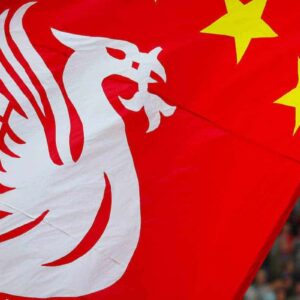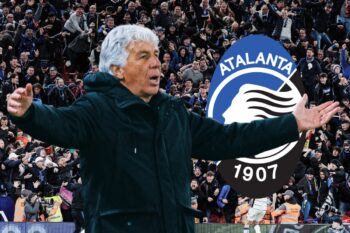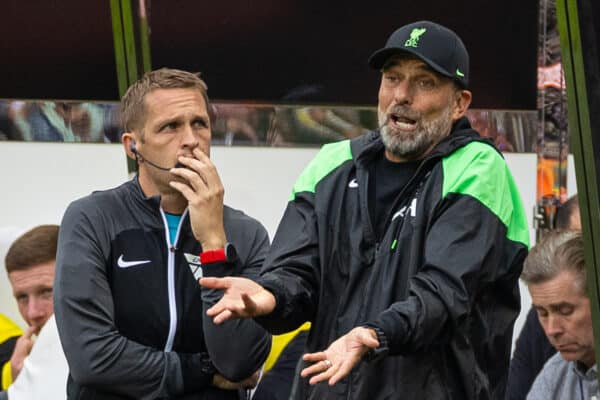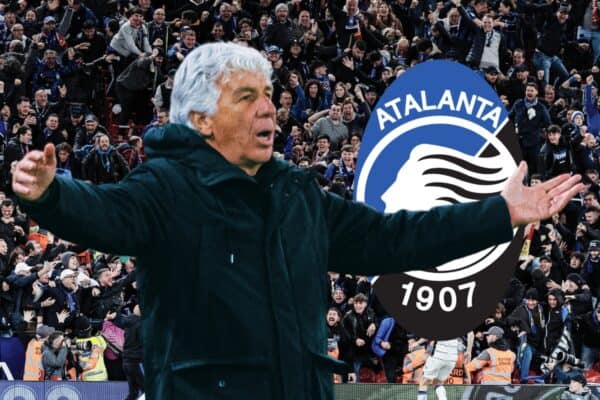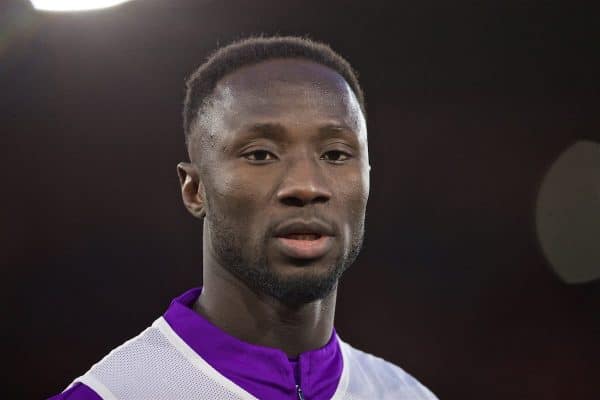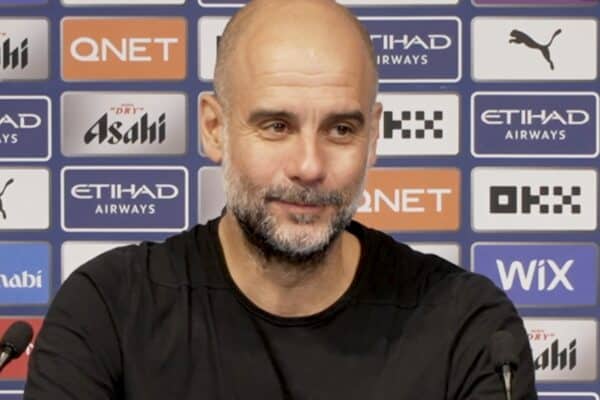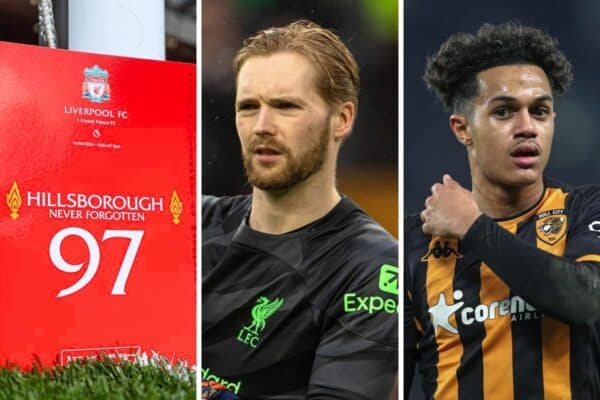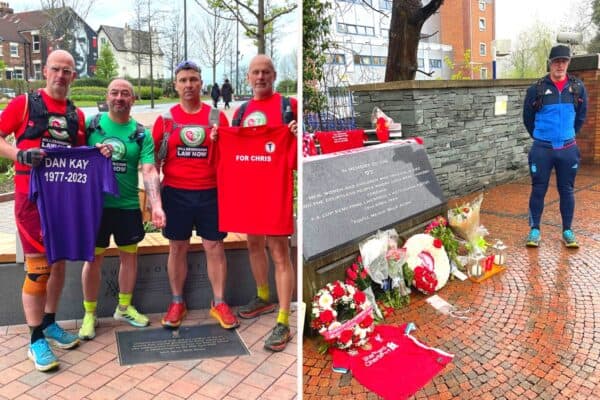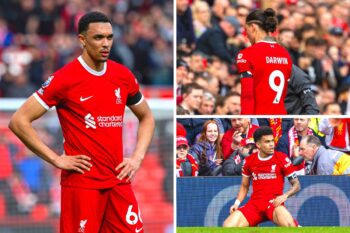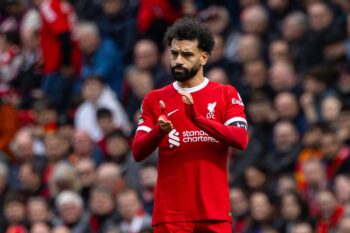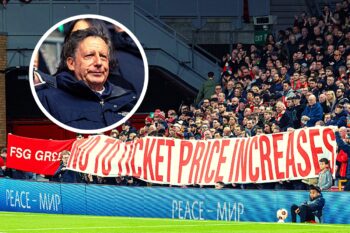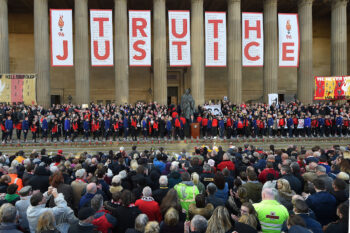Introducing a new mini-series by Liverpool supporter Neil Dunkin, author of Anfield Of Dreams: A Kopite’s Odyssey: From The Second Division To Sublime Istanbul.
IF you’ve won football’s lottery by being born a Liverpool fan, you don’t need telling Anfield is the most fantastic stadium in the world. For atmosphere, passion, fervour and sheer pulsating excitement, nothing surpasses it, least of all the Mogadon trio of Old Trafford’s theatre, Stamford Bridge’s bank or the Emirates mosque.
That said, it is always interesting to make comparisons when you’re abroad and in my time I’ve been lucky enough to see games in some famous arenas. So I’ve picked my favourites, starting with the Maracana, and later in this series I will feature trips to the Azteca, San Siro and Camp Nou.

Rio’s Temple of Football: 109,000 fans and one or two media people welcome the teams onto the pitch before the derby.
On our last night in Brazil after the carnival, the derby of derbies was scheduled between bitter rivals Flamengo and Vasco da Gama and the whole of Rio de Janeiro was going.
After a long wait on Avenida Atlantica, we hailed a taxi, a beat-up VW Beetle which, judging by its deformities, had been losing stock-car races for 50 years.
To make space for luggage, the front passenger seat of this automotive equivalent of the Elephant Man had been removed so I squatted on the floor, straining to peer over a dust-coated dashboard, while my three mates were shoehorned into the back.
During the five days of carnival, newspapers reported 360 people had died ‘“ stabbed, shot, overdosed on drugs, drowned while swimming in the treacherous Atlantic swell ‘“ although the highest number of fatalities resulted from car crashes.
Vibrating on the taxi’s corroded floor, with no seatbelt and just the flimsy boot lid between my legs and amputation, I was rather mindful of Rio’s accident statistics. By a long chalk, traffic is the city’s worst mass-murderer and in the event of any head-on with another vehicle, I could kiss goodbye to my lower limbs, if not the rest of my body.
While I was ruminating on this eventuality, we started losing momentum. I glanced at our driver and saw his eyes were shut, his head listing. He was dozing off.
I shook his shoulder and he woke with a jump.
Minutes later he nodded off again.
‘œHey!’ I bawled. He opened his eyes and smiled.
‘œYou’re falling asleep. What’s wrong? Tired?’
‘œNão,’ he giggled. ‘œEstou bebado. No. I’m drunk.’
That’s all right then, I don’t think. We’d already viewed the aftermath of horrific crashes at crossroads, where juggernauts had flattened cars like cardboard. Now we were lumbered with a driver who was mullered. And hazards lay ahead.
Since footpads can be lurking at night, Cariocas rarely halt at traffic lights ‘“ they edge through, eyes skinned for other vehicles.
Now it was daytime. Robbers should be resting.
Hold on, though.
Approaching a red stop sign, our intoxicated cabby gripped the wheel firmly ‘¦ and put his foot down. Without the briefest once-over, he barrelled straight through.
Congestion came to our rescue. Usually Rio taxi drivers live way out from the city and, having no knowledge of its streets, dump passengers kilometres from their destination because they don’t want to lose face asking directions. On our journey to the Maracana, even this bladdered chappie couldn’t get lost. As traffic built up, he was forced to go with the heavy flow and slow down.
Providence smiled on us; we reached the stadium where I flopped out the Beetle like a wet rag after my white-knee ride. At least we’d arrived undamaged at the Maracana − Nirvana, Mecca, Zion for me and any true football lover.
In the street, I bought a red-and-black Flamengo flag for £2 and then we all tagged on to a line of fans, many in nothing but shorts, to queue beneath the stadium’s 100-foot-high, overarching walls.
Turnstile negotiated, a gloomy corridor led into the ground.

We emerged at pitch level in the Templo do Futebol, the Temple of Football, twin tiers sweeping round to form a concrete bowl, like a giant saucer. Above the roof opposite, the giant statue of Christ was watching, arms outstretched, from his royal box on top of Corcovado peak.
Thinking this was make-believe, I sat down.
Go back to 1950. After 11,000 construction workers had laboured night and day for two years, using 40,000 lorryloads of materials, the Maracana opened for the World Cup in Brazil. The host nation stormed through the tournament, inflicting 7-1 and 6-1 humiliations on Sweden and Spain and meeting Uruguay in a final ordained to bring the Brazilians’ first world title. Even though 199,854 spectators turned up for this formality, Uruguay spoilt the storyline, winning 2-1 and plunging Brazil into mourning.
Now I was in that very stadium. Behind one goal, Flamengo supporters were describing figures of eight in the air with flags as big as billboards while the Vasco hard core at the opposite end brandished theirs in this battle of colours. A music contest was also going full throttle. Amid both sets of fans, samba drummers competed for the loudest noise, deviating abruptly from one rhythm to another to wrongfoot their musical adversaries.
With kick-off approaching, I handed pictures of the Reds with the European Cup to a couple of lads alongside. A Flamengista studied his before muttering, ‘œCope’.
He meant Kop. I nodded. He knew his football.
Around the edge of the lower stand, a moat encircled the pitch and beyond this, on our side of the arena, lay steps that descended into the turf. Up these, Flamengo and Vasco’s teams appeared, to a frenzy of drumming. Rival percussionists had lost the plot, yet their faces were blank as they banged away. No emotion, no smiles. While they gave it the bifters, they were in a trance.
Among Flamengo’s players, I picked out Zico, the White Pelé and South America’s Player of the Year, legendary for the free kicks he practised two hours every day.
Once the game began, both sides’ skills were so exemplary you’d be forgiven for believing they had hands on the ends of their limbs, rather than feet. On receipt of a pass, they caressed the ball, controlling it instantaneously even though the surface was ropy, bare earth in places, because two or three matches were being played on it every week. Back in 1970, when Brazil were crowned world champions for the third time in Mexico to become outright winners of the Jules Rimet trophy, an astonishing 214 games took place at the Maracana during that single year.
On the scoreboard, the temperature was showing as 27C when the attendance flashed up: 109,545. My biggest crowd ever! Not bad for a confrontation between city rivals but well behind the 180,000 for one league game in 1969.
The stadium was supposedly half-full but you’d never have believed it once Vasco scored. While rockets irradiated the duskish sky, the black and whites’ drummers raised the volume with a furious pounding that continued until the referee whistled for the break and both sides scooted down the stairs.
After the teams came out for the second half, Zico orchestrated a siege of the Vasco goal and laid on the through-ball that enabled his side to equalise.
If anything, the jubilation was louder and more dramatic now than when Vasco had gone ahead. With night fallen, fireworks and flares illuminated the heavens, lighting flags that billowed across the stands. Meanwhile, Flamengo’s drummers, impassive to the last, were rupturing multiple blood vessels as they out-thundered their opponents at the other end.
Once the final whistle shrilled, it remained honours even in the Clássico dos Milhões, Classic of the Millions, named in recognition of the clubs’ fan bases, and both sets of supporters shuffled out, heads held high.
In the street, the four of us stood around, weighing up how to get back to our hotel.
Minibuses crept through the throng, touting for custom, and we boarded one bound for the city centre. By now we were in the mood for a nightcap. Out of his bag, Jim pulled some cachaça cane spirit, in a bottle with a jink, a metal cap, and looked around for a sharp edge to prise it open.
Our driver gestured; hand it over. He inserted it in the side of his mouth and gave a twist.
Crack! The cap was off.
After giving Jaws a swig, Jim passed the bottle around, oiling the Brazilian fans’ animated discussion of the game.
While they jabbered away, I drifted off … back to the Maracana ‘¦ goals ‘¦ dribbles ‘¦ tackles ‘¦ drums ‘¦ flags ‘¦ rockets ‘¦ once again I was floating in God’s football ground.
